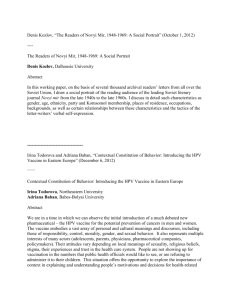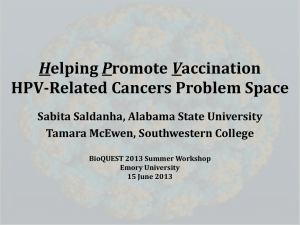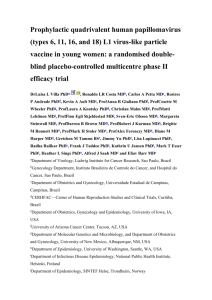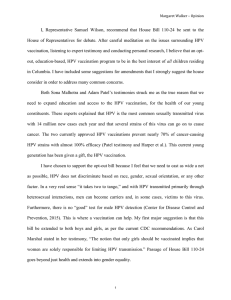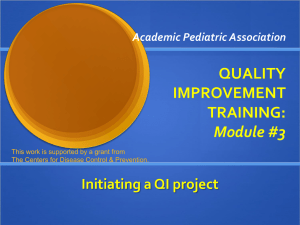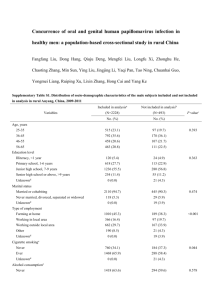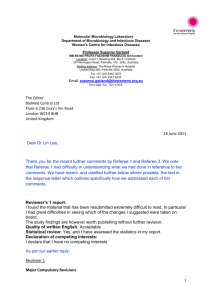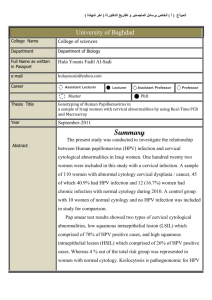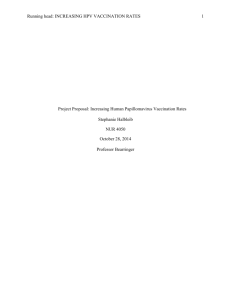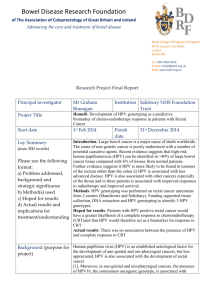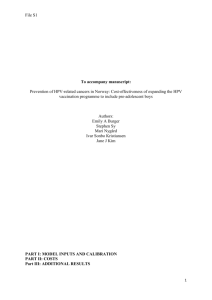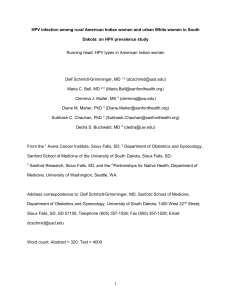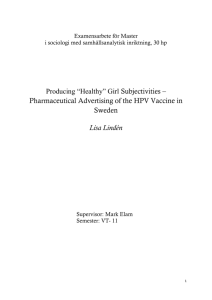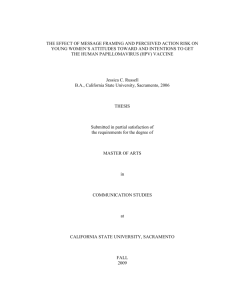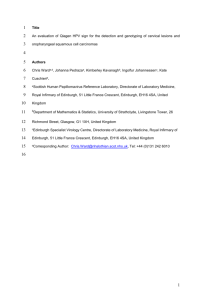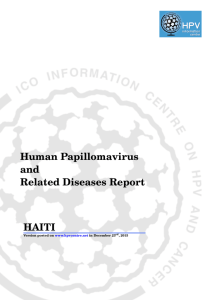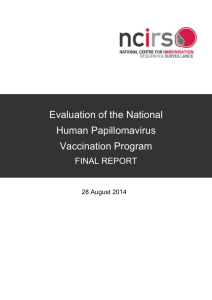40838-2-12118
advertisement
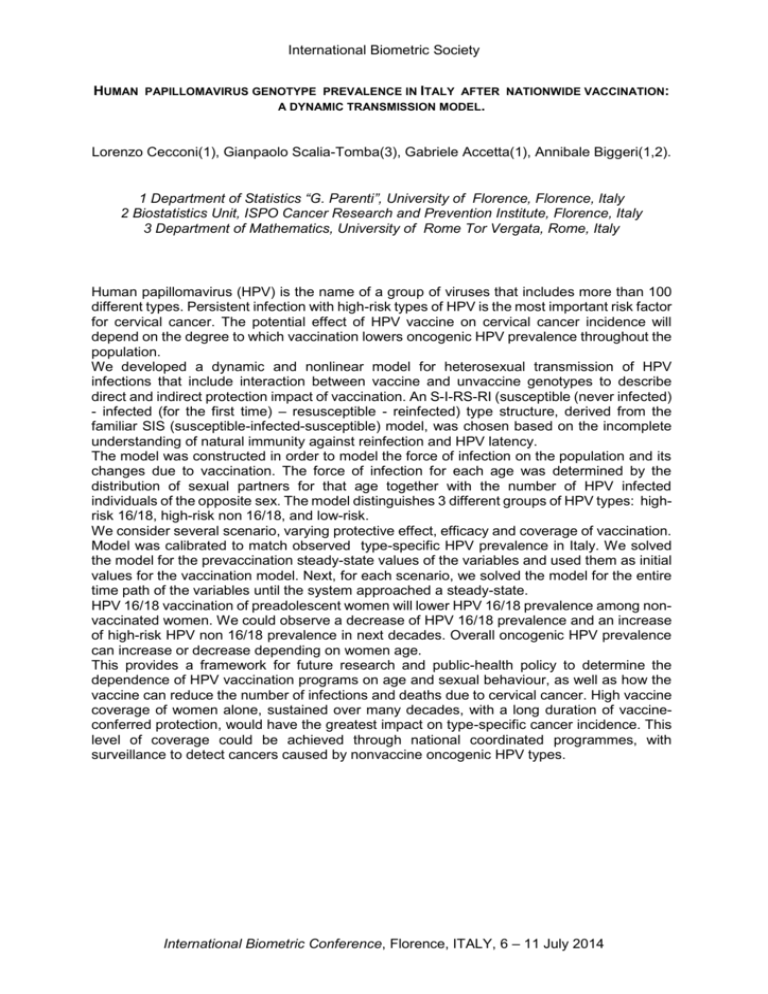
International Biometric Society HUMAN PAPILLOMAVIRUS GENOTYPE PREVALENCE IN ITALY AFTER NATIONWIDE VACCINATION: A DYNAMIC TRANSMISSION MODEL. Lorenzo Cecconi(1), Gianpaolo Scalia-Tomba(3), Gabriele Accetta(1), Annibale Biggeri(1,2). 1 Department of Statistics “G. Parenti”, University of Florence, Florence, Italy 2 Biostatistics Unit, ISPO Cancer Research and Prevention Institute, Florence, Italy 3 Department of Mathematics, University of Rome Tor Vergata, Rome, Italy Human papillomavirus (HPV) is the name of a group of viruses that includes more than 100 different types. Persistent infection with high-risk types of HPV is the most important risk factor for cervical cancer. The potential effect of HPV vaccine on cervical cancer incidence will depend on the degree to which vaccination lowers oncogenic HPV prevalence throughout the population. We developed a dynamic and nonlinear model for heterosexual transmission of HPV infections that include interaction between vaccine and unvaccine genotypes to describe direct and indirect protection impact of vaccination. An S-I-RS-RI (susceptible (never infected) - infected (for the first time) – resusceptible - reinfected) type structure, derived from the familiar SIS (susceptible-infected-susceptible) model, was chosen based on the incomplete understanding of natural immunity against reinfection and HPV latency. The model was constructed in order to model the force of infection on the population and its changes due to vaccination. The force of infection for each age was determined by the distribution of sexual partners for that age together with the number of HPV infected individuals of the opposite sex. The model distinguishes 3 different groups of HPV types: highrisk 16/18, high-risk non 16/18, and low-risk. We consider several scenario, varying protective effect, efficacy and coverage of vaccination. Model was calibrated to match observed type-specific HPV prevalence in Italy. We solved the model for the prevaccination steady-state values of the variables and used them as initial values for the vaccination model. Next, for each scenario, we solved the model for the entire time path of the variables until the system approached a steady-state. HPV 16/18 vaccination of preadolescent women will lower HPV 16/18 prevalence among nonvaccinated women. We could observe a decrease of HPV 16/18 prevalence and an increase of high-risk HPV non 16/18 prevalence in next decades. Overall oncogenic HPV prevalence can increase or decrease depending on women age. This provides a framework for future research and public-health policy to determine the dependence of HPV vaccination programs on age and sexual behaviour, as well as how the vaccine can reduce the number of infections and deaths due to cervical cancer. High vaccine coverage of women alone, sustained over many decades, with a long duration of vaccineconferred protection, would have the greatest impact on type-specific cancer incidence. This level of coverage could be achieved through national coordinated programmes, with surveillance to detect cancers caused by nonvaccine oncogenic HPV types. International Biometric Conference, Florence, ITALY, 6 – 11 July 2014

